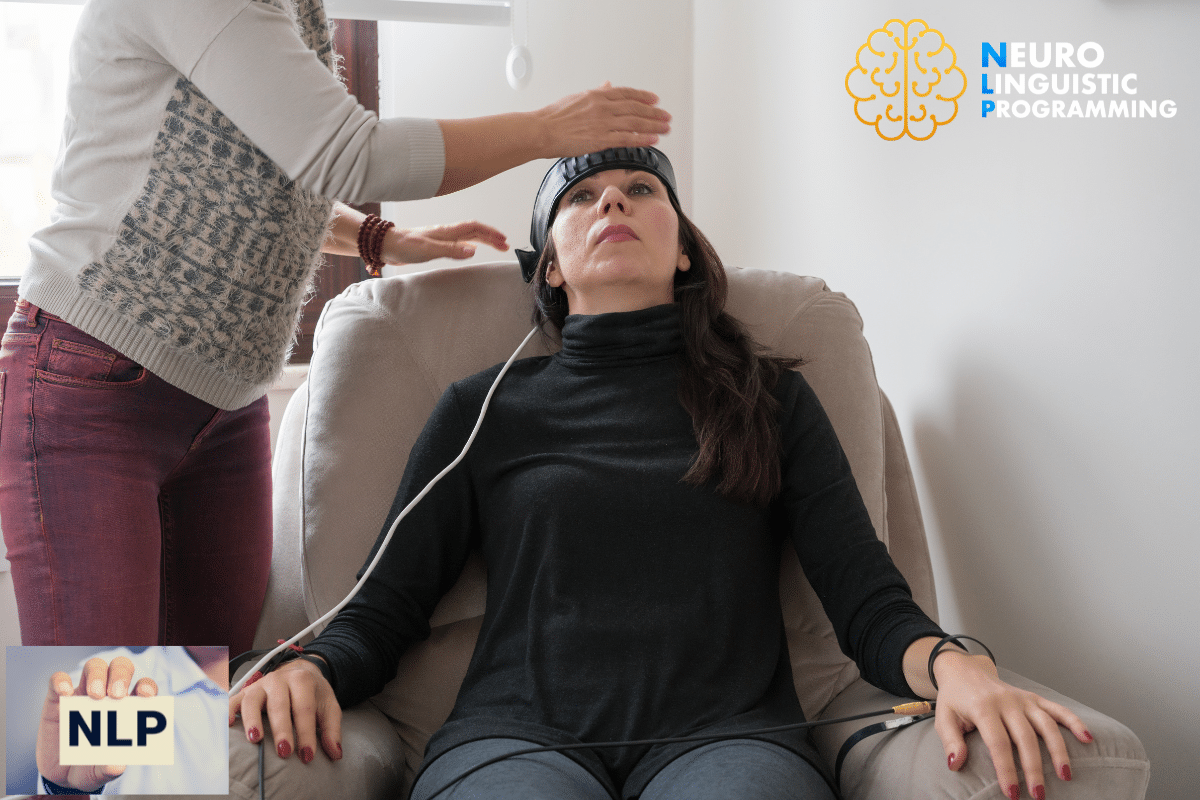Neuro-Linguistic Programming (NLP) is an effective approach that gives tools and strategies to enhance your personal and professional growth. Based on the understanding of the intricate connection between brain’s processes, language and patterns of behavior, NLP helps individuals to reconsider their perceptions and attain the goals they desire. Learning the fundamentals of NLP can greatly improve abilities to communicate, self-awareness and the ability to achieve goals.
The Key Concepts of NLP
- Presuppositions
NLP is based by relying on certain preconceptions about human behavior which serve as the foundation. Here are some most fundamental presuppositions that are required:
- The map isn’t the actual territory. Reality perceptions are affected by our personal experiences.
- Each behavior is based on the intention to be positive. Even bad behaviors usually result from positive motives or requirements.
- There is no failure. only feedback: Mistakes provide an opportunity to learn, and can be used as a guide for future actions and making adjustments.
- The Rapport Principle
Establishing rapport is an essential element of successful influence and communication. It is easier for people communicate and be more engaged when they feel respected and appreciated. Techniques such as mirroring body words, matching tone and using similar words will create a feeling of familiarity and confidence. - Sensory Awareness
neuro-linguistic programming is a method of using sensory modalities, including auditory, visual and kinesthetic as well as olfactory and gustatory, to shape the way people process data. Through enhancing the senses people can be taught to recognize subtleties in communication and thus improve their communication to other people.
Models and Techniques in NLP
neuro-linguistic programming has a range of methods and models which practitioners frequently employ to achieve their goals successfully. Here are a few of the most commonly used:
- Anchoring
This method involves affixing the sensory stimuli–such as an aroma or a touch–with the state of mind. When the anchor is activated people can recreate the state of mind, which can help their emotional state in situations where control is essential. For example, a short touch of the thumb could make someone feel more confident during the stress of a presentation. - Reframing
Reframing can help people change their view of an event helping them view the situation in a positive perspective. When you alter the meaning of an experience or belief it is possible to alter the impact on your emotions. For instance, instead considering public speaking as threatening one could view it as a thrilling opportunity to share ideas. - The Swish Pattern
This method is designed to change undesirable behavior or habits by generating visual representations of the behavior and “swishing” it with a more pleasant behaviour in the mind. It makes use of imagery to stimulate the brain’s neural pathways, which triggers a change in behaviour.
Application of NLP Principles
The fundamentals in NLP can be utilized in many areas of our lives, from personal growth to professional performance. Let’s take a analysis of different applications:
- In Business
Organisations are increasing their use of neuro-linguistic programming in their training programs to improve communication among employees teamwork, leadership, and communication abilities. NLP strategies can improve the skills of negotiation and conflict resolution which makes teams more efficient and cohesion. - In Therapy
Therapists often employ NLP to assist clients in overcoming anxiety, fears and self-limiting beliefs. These techniques can bring about rapid changes and a more deeply-felt sense of well-being. - In Education
Teachers using neuro-linguistic programming techniques can create better learning environments through understanding how students make sense of information. They can create instructions that address a variety of types of sensory inputs, increasing retention and engagement.
A Final Note on the Benefits of NLP
The efficacy of NLP is in its capacity to enable individuals to manage their cognitive and psychological processes. When people are aware of their thoughts patterns and use of language and their language usage, they are able to create better outcomes both in their professional and personal life.
If you’re looking to further explore the concepts and methods of NLP Numerous valuable sources are accessible online. Websites such as NLP University or the neuro-linguistic programming Institute offer courses including webinars, articles, and even webinars which go deeper into neuro-linguistic programming methods and use.
Through the application of the fundamental concepts of Neuro-Linguistic Programing, individuals are able to adapt and develop to enhance their relationships, experiences, and overall results in life. The journey of NLP may lead to new capabilities that were previously thought to be to be far off, and empower each of us to master the complexity of thinking and language more effectively.
Practical Applications of neuro-linguistic programming in Personal Development
The field of neuro-linguistic programming (NLP) has earned a prominent position in the field of personal development. It offers techniques that dramatically improve the self-awareness, empathy and communication abilities. This method combines the behavioral and language patterns to assist individuals in achieving their goals. Utilizing neuro-linguistic programming techniques, you can change your thinking, challenge the limitations of your beliefs and boost the level of your psychological intelligence.
Understanding the Core of NLP Techniques
The fundamental premise of neuro-linguistic programming is the realization that our actions and thoughts are intricately connected to the language we employ. Techniques such as visualization reframing, anchoring, and so on serve as powerful tools for personal development. Each technique offers a distinct method to discover self-improvement.
Visualization and its Impact
Visualization is a core NLP technique that entails generating clear and detailed mental images of the goals you wish to achieve. This method can help you rehearse successful scenarios, such as securing the job you desire or improving your public speaking skills. Through visualizing these successes will not only boost your confidence, but also train your brain to see opportunities that match your objectives.
Anchoring for Emotional Regulation
Anchoring, an additional NLP method, allows people to develop mental triggers that trigger positive feelings. For instance, if often associate a calm position with success, then you could “anchor” those feelings to the physical act of pressing your fingers together. If you are faced with stressful circumstances using this anchor could assist in stabilizing your emotional state and allow you to react more efficiently.
Reframing: A Shift in Perspective
Reframing is the process of looking at a situation from a different perspective changing your perspective and emotional reaction. For instance, instead of thinking of failure as a setback you might consider it as a learning opportunity. This change in perspective can significantly increase your resilience and be more open to learning.
Real-Life Applications of NLP Techniques
| Technique | Application | Benefits |
| Visualization | Mental practice for job interviews | Confidence boosted, less anxiety |
| Anchoring | A calming effect for public speaking | Better performance and emotional stability |
| Reframing | Rethinking your perception of constructive criticism | Better learning, more ability to adapt |
Improved Communication Skills
NLP can also greatly enhance communication abilities as well, in both professional and personal settings. Learning to recognize non-verbal signals can make interactions more efficient. For instance, mirroring body language can build confidence and build rapport, which can make conversations easier. In addition active listening, which is an essential element of efficient communication, can be improved by NLP methods.
Building Empathy Through neuro-linguistic programming
Empathy is an essential quality of personal growth that can be improved through NLP. Techniques like perspective-taking can help individuals to consider others perspectives. When you practice empathy, you will not only improve your relationships, but also help create an environment that promotes dialog.
Setting and Achieving Goals
Goal setting is another area in which neuro-linguistic programming is a leader. Utilizing SMART (Specific Measurable, Accurable, Relevant, and Time-bound) criteria that are integrated with NLP techniques it is possible to establish goals that resonate at a more emotional level. The alignment between your values and goals boosts motivation and makes it easier to keep your commitment.
While you explore the practical application of neuro-linguistic programming in your personal development look into the information and resources from experts on websites like nlpu.com and nlp.com. These sites provide valuable information to anyone who is looking to harness the power of neuro-linguistic programming.
Neuro-linguistic programming provides a collection of methods and strategies that will allow you to experience long-term personal development. Utilizing these techniques will help you develop an attitude that is geared towards the ability to communicate effectively, resilience, and a goal-setting process that is purpose-driven. Explore the process of self-discovery and strengthen yourself by using neuro-linguistic programming.
The Role of NLP in Effective Communication
Effective communication is vital for both professional and personal environments. One approach that has garnered the attention of people who want to improve their communication abilities includes neuro-linguistic programming (NLP). This method blends language elements along with neurocognitive techniques to help people to communicate with clarity and influence.
The Foundations of neuro-linguistic programming
NLP is based upon the belief that thoughts as well as our language and behaviour are all interconnected. Through harnessing this connection, individuals can change their communication patterns. Important techniques include demonstrating successful behavior changing perspectives, reframing the way we think, and establishing positive thinking. These strategies are not just beneficial for personal development, but also help improve interpersonal relationships.
How NLP Enhances Active Listening
Listening actively is an essential aspect of a successful communication. neuro-linguistic programming techniques aid in deeper listening by encouraging the ability to empathize and understand. By mirroring and coordinating the body language and vocal tones, communicaters can establish connections with their audiences. This encourages the openness of their audience and encourages more stimulating conversation.
Key NLP Techniques for Active Listening
- Mirroring Infusing the language, body posture and attitude of the speaker in order to make it seem like they are familiar with.
- Parsing Repeating what the person speaking has said in order to ensure the speaker’s understanding and to validate their opinions.
- clarification: asking questions in order to get deeper insight into the speaker’s words, while ensuring full comprehension.
Improving Clarity Through Language
The word choice will affect how clear communication is. neuro-linguistic programming stresses the importance of precision in language. In understanding how language affects perception, people can improve the quality of their messages. For example, positive words can encourage and motivate, whereas ambiguous terms could cause confusion.
| Language Style | Impact |
| Positive Language | Engages and motivates the listener |
| Negative Language | Can demotivate or create resistance |
| Jargon | Could confuse listeners not familiar with the terminology |
Through conscious application of NLP techniques, people can create communications that are resonant with the audiences. This skill not only improves communication, but also increases trust and credibility.
Utilizing Anchoring for Persuasive Communication
Anchoring is a potent NLP method that involves identifying a particular emotional state to a certain stimulus. This technique is particularly effective in persuasive communications. For instance, a speaker might employ a rousing tone or vivid imagery at crucial moments of their presentation. These triggers can help in eliciting an emotional response to the listeners, which makes them more open for the presentation.
Furthermore, knowing the emotions of the audience enables communicators to adapt their approach. If an audience seems disengaged, the communicator is able to change their style, reengaging the audience by altering their tone of voice or the style of narration.
Building Rapport Through NLP
It is vital to establish rapport to a successful communication. neuro-linguistic programming can provide practical ways of creating connections with other people. Strategies like using similar speech techniques and shared experiences can help create a stronger connection between the speaker as well as the people in the audience. If people feel connected to one another, it is more probable be attentive and responsive.
Additionally, understanding non-verbal signals–movements, facial expressions and body language overall can greatly improve rapport. When reacting appropriately to these cues communication professionals are able to better align themselves with their target audience, thereby building the connection.
Neuro-linguistic programming is a powerful tool for improving communication. Utilizing strategies that focus on listening, language as well as anchoring and building rapport individuals can alter the way they communicate. In a boardroom, or casual conversation neuro-linguistic programming will result in more meaningful and effective exchanges.
If you’re interested in digging further in neuro-linguistic programming as well as its application, look into sources from NLP.com and NLPU.com for valuable insights.
Transformation of Limiting Beliefs by NLP Techniques
NLP is a powerful technique for overcoming cognitive and behavioral barriers. (NLP) can provide powerful strategies to change the assumptions that hold people behind their dreams. By recognizing the connections between our brain as well as our language and behavior patterns, we can identify and challenge the mindsets that limit our abilities. This is vital to personal growth as well as career advancement and improving relationships between people.
Limiting beliefs are often rooted in previous experiences, societal expectations and personal interpretations are accepted as true. They can manifest in many ways: fear of failure self-doubt or negative self-talk. neuro-linguistic programming offers a framework to challenge and identify these beliefs, clearing the way for an positive attitude.
One of the most important methods used in NLP to change beliefs that are limiting is reframing. Reframing can alter how we view the belief in question, allowing us to view the issue from a different point of view. For instance, instead of thinking of a failing as an end in itself the person can view it as an opportunity to learn and thus lessen the negative effects.
Another successful neuro-linguistic programming method is the anchors. Anchoring connects an emotional state to a physical gesture or action. For instance, if a person is confident and confident prior to an important occasion, they could create an anchor by rubbing their forefinger and thumb together. Next time they have to encounter a difficulty it is possible to repeat that motion to trigger the same confidence. This act breaks down limiting beliefs and promotes an optimistic mindset.
The NLP Academy offers many resources related to these methods to help people manage their thoughts and actions. Through the practice of neuro-linguistic programming regularly, people can slowly change their outlook on life to allow room for positive change.
One technique that is particularly effective for NLP can be”belief change. “belief change” technique. This method involves a number of actions that can be taken:
- Determine the belief that is restricting you: Start by pinpointing the particular belief you wish to alter. Write it down so that you can give clarity.
- Study the source: Reflect on when and how this belief came to be. Knowing its origins can help to dismantle its power.
- Refute the belief: Assess the evidence that supports this belief. Consider, “Is this absolutely true?”
- Make a brand new and empowering conviction: Formulate a positive affirmation that is in opposition to the negative belief.
- Imagine the belief you are about to accept: Close your eyes and visualize vividly living this affirmation. The use of all the senses in this visualization helps reinforce this new conviction.
- The belief should be anchored: As mentioned earlier connect this new belief to a physical act to increase its real.
The synthesis of these strategies results in a profound change in your personal attitude. It is crucial to use these techniques regularly to ensure lasting transformation. In addition, NLP techniques can be utilized not only at a personal level as well as in professional situations. Businesses can employ NLP to improve team dynamics, increase communication, and foster an environment that encourages growth.
To demonstrate the effectiveness in NLP further, take a look at this result from the NLP workshop. Participants reported a dramatic decrease in their beliefs about themselves, with 75% of them feeling more confident in their abilities by using anchoring and reframing techniques. These workshops help to build communities in which people support each other to overcome personal obstacles.
If you are interested in diving deeper into NLP seeking advice from certified professionals can prove beneficial. Practitioners who have been certified in NLP can offer individualized strategies that target certain beliefs as well as facilitate groups that promote the collective development of individuals.
If you’re interested in learning more about the ways in which NLP can transform our lives, the platform NLP.org contains various studies and articles on the effective application of NLP techniques across various fields.
Transformation of negative beliefs using NLP requires a method of practice that can result in profound personal and professional development. By using these techniques, you can help individuals become more confident, allowing individuals to feel free and pursue their goals and lead a fulfilling life full of possibilities.
The Intersection of NLP and Modern Psychotherapy
“Neuro-linguistic programming” (NLP) is a sophisticated mix of linguistics, psychology and behavioral science providing a unique approach to understanding and altering the human behavior. The application of neuro-linguistic programming has gained popularity in the field of psychotherapy today and is changing the way we approach therapy. In learning how the mind, behavior and words interact and how therapists can use NLP’s principles to create deeper connections to their clients and increase the outcomes of their treatment.
The Foundations of NLP in Psychotherapy
neuro-linguistic programming was developed in the 1970s to provide a method to describe successful treatments and strategies in a logical way. The premise behind NLP is that cognitive and language processes influence our experience. Psychotherapists use NLP methods to trace these patterns of thought and to identify areas that could be improved. Therapists could employ techniques such as reframing anchoring and meta-modeling in order to dispel negative beliefs and stimulate positive thinking in their clients.
Reframing: Changing Perspectives
One of the primary methods used in NLP involves reframing. This method involves changing the way you perceive a situation and altering the significance. In psychotherapy, reframing helps therapists to assist clients in interpreting their problems in a different way. For instance, instead of thinking of failing as a personal flaw clients are able to consider it as a stepping towards success. This can not only lessen anxiety, but also increases resilience.
Anchoring: Establishing Positive States
Anchoring is yet another effective neuro-linguistic programming technique that involves creating a link to an emotional state. For example an therapist could help the client to recall an experience of happiness or confidence, and connect it to the physical act of placing their thumbs with their forefinger. If the client is in a state of depression they could make this gesture to bring back positive emotions. This method is especially efficient in reducing anxiety and improving self-esteem.
NLP Techniques in Various Therapeutic Modalities
NLP has demonstrated synergy with a variety of therapeutic methods that allow practitioners to tailor their interventions to meet the demands of clients. Here are a few ways neuro-linguistic programming can be integrated with other popular therapies:
- Cognitive Behavioral Therapy (CBT): By using NLP in conjunction with CBT, therapists can include the element of language into cognitive restructuring, assisting clients to identify negative thoughts that are related to their struggles.
- Humanistic Therapy: Humanistic psychologists may use NLP techniques to enhance the empathy of their clients, while also fostering more therapeutic bonds.
- Gestalt Therapy Utilizing reframing and anchoring techniques therapy, therapists can assist clients in recognizing their emotions and gain understanding of their actions and motivations.
Evidence Supporting NLP in Psychotherapy
Although NLP has its advocates and a lot of practitioners have reported positive results, its scientific proof results have been mixed. Certain studies suggest that NLP techniques have the potential to significantly decrease symptoms of depression and anxiety however, others suggest that more thorough studies are required to prove the effectiveness. However, the flexibility of NLP is attracting attention from practitioners who appreciate its applications. If you are interested in research findings, websites like NLP Research Team neuro-linguistic programming Research Team offer insights into ongoing research and efforts to verify neuro-linguistic programming methods.
Challenges and Criticisms
Despite its popularity NLP has been criticized by the larger psychology community. The skeptical argue that NLP isn’t backed by an established empirical basis and warn against its non-regulated practice. Therapists must use neuro-linguistic programming carefully, employing research-based methods along with NLP strategies. Being aware of these issues can help practitioners to adhere to the highest standards of ethics and to prioritize the wellbeing of clients.
Future Directions for NLP in Psychotherapy
The future of the intersection between NLP with modern psychotherapy looks promising. As more therapists investigate NLP the possibilities for advancement in treatment frameworks. Training and education that is ongoing in neuro-linguistic programming will allow practitioners to apply the techniques in a way that is compatible to ethical standards. Connecting with the NLP community provides the possibility of collaboration among therapists as well as sharing of knowledge about successful applications.
NLP is a fascinating aspect of modern psychotherapy that fills the gaps in traditional therapy practices. Through the development of deeper understanding for clients and providing practical tools for changes, NLP has the potential to enhance the therapeutic process and bring about lasting changes. For more details on neuro-linguistic programming applications, check out the NLP Institute for the best resources and training materials.
Conclusion
The study of Neuro-Linguistic Programming (NLP) reveals the richness of its principles and methods that have the potential to revolutionize both professional and personal domains. The basic principles of neuro-linguistic programming are rooted in the knowledge of how behavior and language connect, create an opportunity for people to harness their abilities more effectively. Through recognizing the fact that our thoughts and language influence our perception of reality, people who practice NLP are able to develop a greater awareness of the way they communicate and improve their control of their emotions and self-regulation.
In the area of personal growth, NLP serves as a useful toolbox. Anyone looking to improve their lives may employ specific strategies to conquer obstacles and promote the growth they desire. Strategies like anchoring, reframing, and visualization do not just help in gaining a better understanding of one’s own motivations, but also inspire active changes. When people establish clear goals and reprogram their minds they usually find themselves liberated from the limitations which previously kept them from progressing. This process leads to self-confidence improvement but also a more fulfilled and a life that is purpose-driven.
Effective communication is essential for every aspect of our lives from relationships with family and friends to professional interactions. neuro-linguistic programming can provide valuable abilities aimed towards improving interpersonal communication. Utilizing techniques such as pausing and leading, people are able to build rapport and establish connections that connect on a more profound level. Also, understanding the subtle cues that are a part of body language and tone could significantly improve one’s ability to effectively communicate messages. A greater awareness helps create an environment where both parties feel comfortable to reduce misunderstandings and promote positive dialogue.
A major transformative features of neuro-linguistic programming is its capacity to challenge and change limitations in beliefs. A lot of people unknowingly believe in assumptions that hamper advancement in their professional and personal lives. NLP techniques like The Swish Pattern and belief shift help to break down these limitations. By identifying the negative beliefs and reframe the negative beliefs into positive ones people can change their thinking. This allows them to accept new possibilities and work towards their goals, which leads to a more enlightened and fulfilled life.
The convergence of NLP as well as modern psychotherapy have opened the doors to new therapeutic methods. Therapists are increasingly using NLP techniques along with traditional methods to provide complete healing experiences. This allows an in-depth understanding of clients problems while offering useful tools to change. Since mental health professionals are aware of the importance of linguistic patterns as well as behavioral changes, they are able to offer clients more effective routes for recovery and personal growth. NLP improves the therapeutic environment by making the process more attainable and exciting for those who are seeking changes.
The range of NLP applications is encompassing a wide range of areas, making it a multi-faceted method to improve the living quality. Leaders in business employ neuro-linguistic programming strategies to inspire teams, improve negotiation abilities, and develop an effective leadership. In the realm of education, teachers can make use of NLP principles to design engaging learning environments that are geared towards various types of learning. Athletes can gain mental focus and clarity by using neuro-linguistic programming and can beat anxiety during competitions and boost performance. Due to its versatility, NLP proves that it surpasses the traditional boundaries and can be adapted to meet specific situations.
When we establish our knowledge of Neuro-Linguistic Programming, it becomes clear that this field has huge potential. Through focusing on the relationship between behavior, language, as well as the brain, people are better prepared to deal with the challenges of life. If you’re looking for personal development or improved communication skills or a greater understanding of the mind’s functions, neuro-linguistic programming offers tools to assist you in this process. The underlying principles and techniques of NLP allow you to shape your personal narrative and develop an existence that is a reflection of your goals.
Incorporating the concepts of NLP is not just an academic pursuit it’s an invitation to be actively involved and interact with your surroundings. When you study these concepts further, contemplate the possibilities that arise. What could changing the way you think about your beliefs alter your experience? What ways can improved communication skills improve your relationships? If you consider these questions, you could discover that neuro-linguistic programming is not just a way to improve your communication skills but also provides a powerful process of self-discovery as well as the empowerment. When you integrate NLP into your daily routine and practice, you can move towards a future that is marked by clarity, purpose and authentic.










